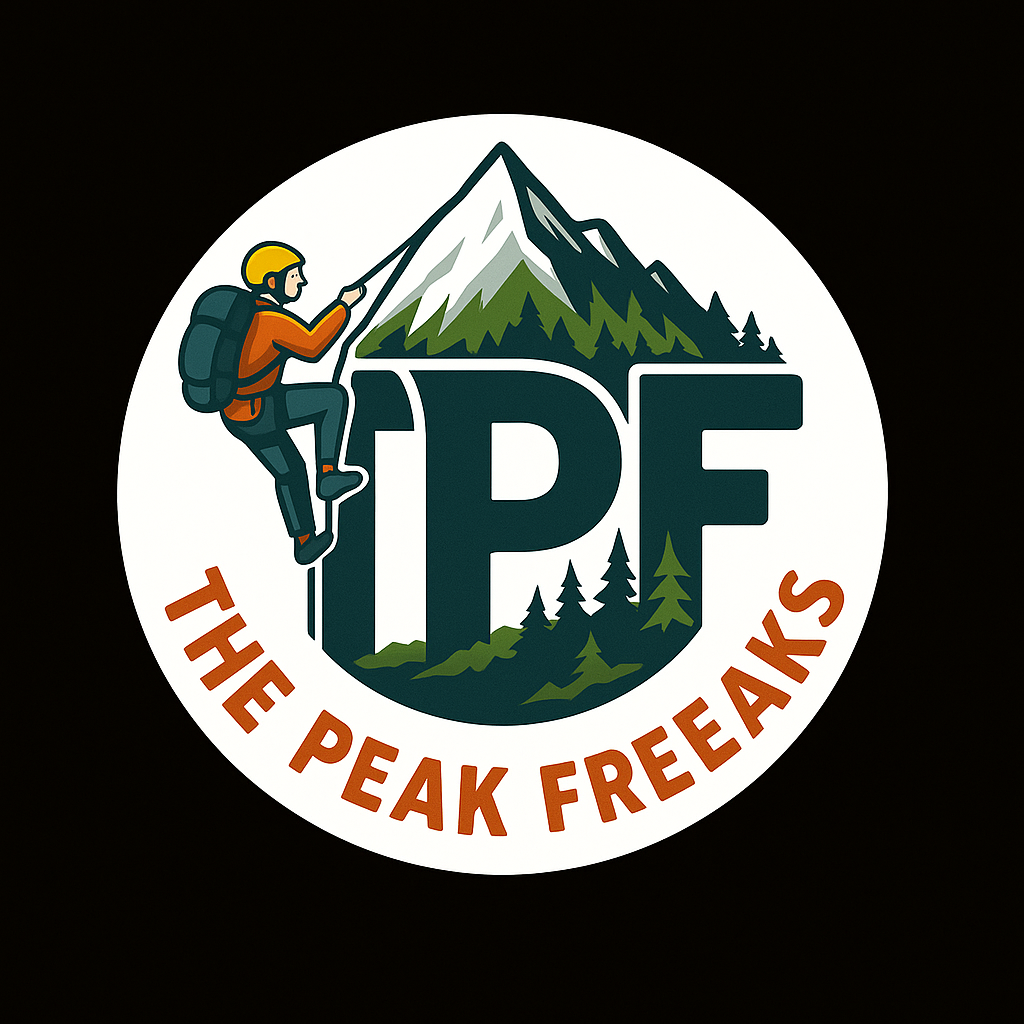Bhrigu Lake Trek
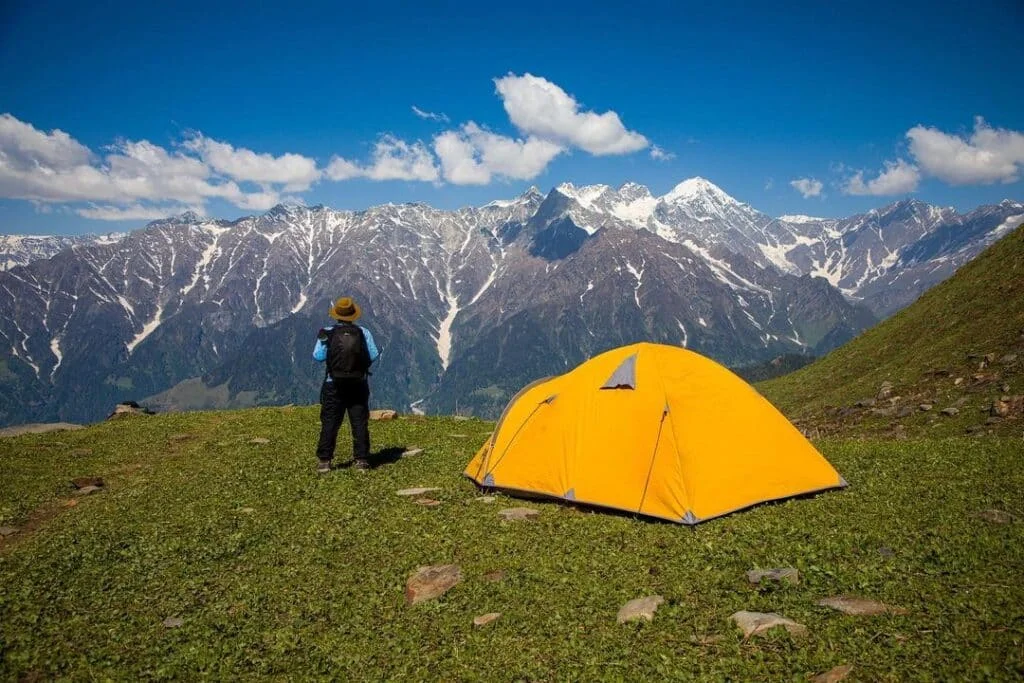
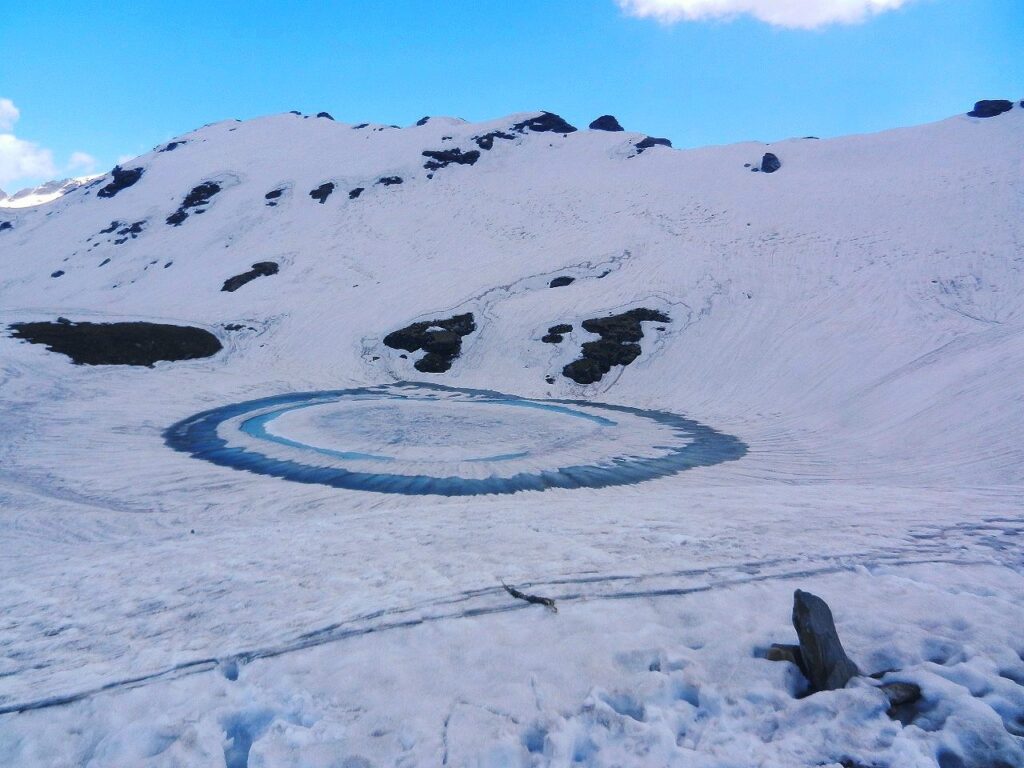
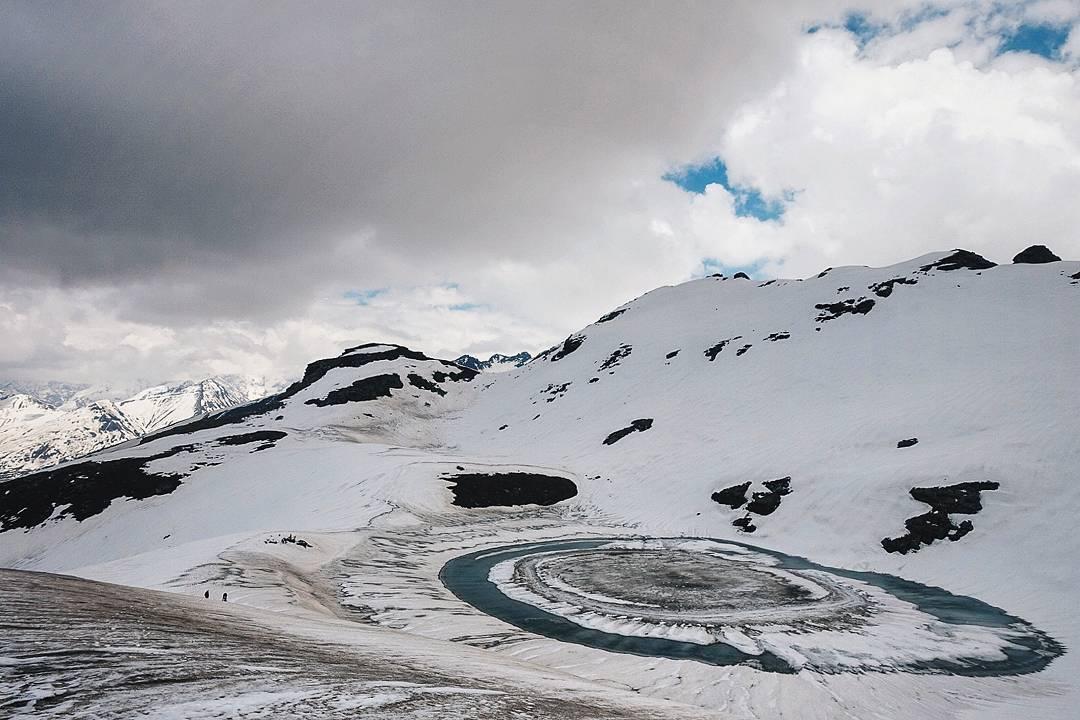
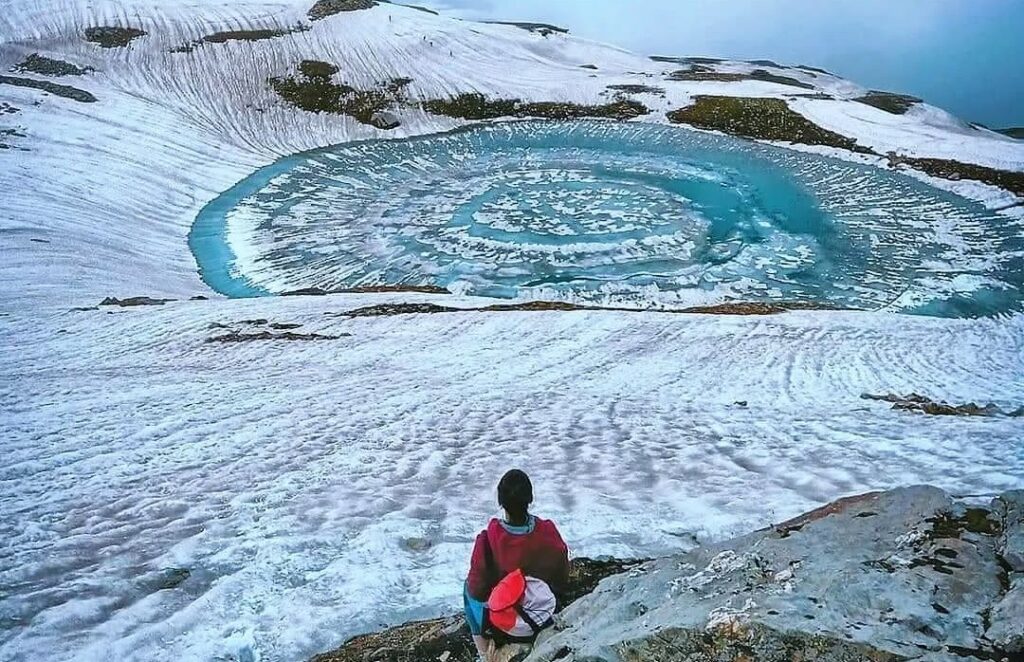
from
Rs.(4,499)
5,499
Duration
(4D/3N)
Height
(13,700ft)
Distance
(26km)
Overview:
Nestled in the upper Kullu Valley of Himachal Pradesh, the Bhrigu Lake Trek is a short yet stunning high-altitude trek ideal for beginners and seasoned hikers alike. The trek offers an unmatched combination of natural beauty, cultural richness, and spiritual significance. Named after the legendary sage Bhrigu, who is believed to have meditated by its serene shores, the lake sits at a breathtaking altitude of 14,100 feet.
Starting from Gulaba, a quaint village just a short drive from Manali, the trail meanders through lush forests, expansive alpine meadows, and panoramic ridgelines. Within just a few days, trekkers witness the remarkable transformation of landscapes—from pine-covered slopes to snow-draped summits and finally the turquoise waters of Bhrigu Lake. What sets this trek apart is the chance to experience snow even in early summer, alongside awe-inspiring views of peaks like Hanuman Tibba, Deo Tibba, and Seven Sisters. Ideal for those looking to experience the thrill of high-altitude trekking without an extensive time commitment, the Bhrigu Lake Trek promises both adventure and tranquility in equal measure.
Trek Highlights:
- High-altitude alpine lake (14,100 ft) accessible in just 3 days
- Breathtaking views of Dhauladhar and Pir Panjal ranges
- Trek through lush meadows, dense cedar forests, and snowy stretches
- Ideal short trek for beginners and families
- Witness local Himalayan flora and fauna
- Panoramic sunrise/sunset points during the climb
- Close proximity to Manali – perfect weekend getaway
- Learn about mythology associated with Sage Bhrigu
Why You’ll Love the Sar Pass Trek
The Bhrigu Lake Trek is a personal favorite because it offers an extraordinary Himalayan experience in a short span, making it perfect for those with limited time yet a deep love for nature and adventure. What makes this trek truly special is the magical transformation of landscapes—from dense forests and rolling meadows to the stunning glacial lake surrounded by snow-capped peaks—all within just a couple of days. The panoramic views of the Dhauladhar and Pir Panjal ranges, the spiritual serenity of Bhrigu Lake itself, and the peaceful campsites like Rola Kholi create an unforgettable blend of beauty, challenge, and tranquility. Whether it’s the thrill of walking through snow in summer or the joy of watching the sunset from a high-altitude meadow, Bhrigu Lake leaves you with a sense of awe and a renewed connection to nature. It’s not just a trek—it’s an experience that stays with your soul.
Trek Difficulty Level
.✅ Difficulty Level: Easy to Moderate
• Altitude: The trek reaches up to 14,100 ft (4,300 meters), so proper acclimatization and hydration are important to avoid altitude sickness.
• Duration: Typically completed in 3 to 4 days, it involves 4–6 hours of trekking each day.
• Trail Conditions: The trail includes steep ascents, muddy patches, and during early summer or post-monsoon, snow-covered paths or slippery grasslands.
• Weather: Conditions can change quickly. Cold winds and occasional rain or snow can make the trek challenging
🗓️ Bhrigu Lake Trek– 4 Day Detailed Itinerary
Region: Kullu Valley, Himachal Pradesh
Starting Point: Gulaba (22 km from Manali)
Maximum Altitude: 13,700 ft (approx. 4,300 meters)
Trek Grade: Easy to Moderate
Duration: 4 Days
📍 Day 1: Manali to Gulaba (Drive) → Trek to Rola Kholi (9,890 ft)
- Altitude Gain: 6,730 ft (Manali) to 9,890 ft (Rola Kholi)
- Trek Distance: ~6–7 km
- Trek Duration: 3–4 hours
- Highlights:
- Scenic drive from Manali (around 22 km) to Gulaba, the trek starting point
- Gentle ascent through dense pine and oak forests
- Walk past blooming alpine meadows and cascading streams
- Clear views of Manali Valley, Beas River, and surrounding mountains
- Reach the Rola Kholi campsite, a wide, grassy clearing by a mountain stream
- Stay: Overnight in tents at Rola Kholi
- Meals: Lunch and dinner included
📍 Day 2: Rola Kholi to Bhrigu Lake (14,100 ft) → Return to Rola Kholi
- Altitude Gain: 9,890 ft to 14,100 ft
- Trek Distance: ~10 km round trip
- Trek Duration: 6–8 hours (total)
- Highlights:
- The most challenging yet rewarding day of the trek
- Early start to ensure clear weather at the summit
- Steady climb over alpine ridges, snow patches (in early summer), and rocky terrain
- Reach Bhrigu Lake, a glacial lake sacred to locals and often partially frozen
- Spend time soaking in panoramic views of Hanuman Tibba, Deo Tibba, and Pir Panjal Range
- Descend back to Rola Kholi carefully (especially if there’s snow)
- Stay: Overnight in tents at Rola Kholi
- Meals: Breakfast, lunch, and dinner included
📍 Day 3: Rola Kholi to Gulaba → Drive back to Manali
- Altitude Loss: 9,890 ft to 6,730 ft
- Trek Distance: ~6–7 km
- Trek Duration: 3 hours
- Highlights:
- Easy descent back through the forest and meadows
- Take in the beauty of the valley in the morning light
- Arrive at Gulaba by noon
- Short drive back to Manali, reaching by late afternoon
- Meals: Breakfast included
🧭 Optional Add-On Day (Pre-Trek Acclimatization – Day 0)
- Arrival in Manali (Day before trek begins)
- Use this day to rest, explore Manali, and acclimatize
- Visit Hadimba Temple, Mall Road, or the Beas River side walk
- Recommended especially for those arriving from low altitudes
✅ Inclusions — What’s Included in Your Trek Package
At The Peak Freaks, we aim to provide a seamless, safe, and immersive trekking experience. Your trek fee includes:
🏕️ Accommodation:
- Stay in high-quality alpine tents on twin/triple sharing basis during the trek.
- Sleeping bags, foam mattresses, and pillows provided at each campsite.
- Separate kitchen and dining tents at campsites.
🍽️ Meals:
- All meals during the trek – nutritious, freshly prepared vegetarian food (breakfast, lunch, evening tea/snacks, and dinner).
- Clean drinking water (boiled or filtered) available at all camps.
- Meals start with lunch on Day 1 and end with breakfast on Day 5.
👨✈️ Trek Team & Safety:
- Experienced and certified trek leaders and local guides for the entire route.
- Support staff including cook, helpers, and porters for logistics and camp setup.
- First Aid medical kit, oxygen cylinder, and pulse oximeter for altitude monitoring.
- Radio/walkie-talkie for communication where needed.
🧳 Logistics:
- Arrival: Trekkers are expected to reach Manali, the base camp, on their own.
- Trek Start: The trek begins on foot from Manali, so no vehicle transfer is needed at the start.
- Return: On the final day, after descending to Gulaba, shared cabs will be arranged to drop trekkers back to Manali (approximately a 1-hour drive).
- Mule/porter support for carrying common equipment (tents, kitchen gear, etc.).
- Note: All internal transfers during the trek (Barshaini to Kasol) are included in the trek cost. Travelers must make their own arrangements to reach and depart from Kasol.
💼 Other Perks:
- Pre-trek briefing and orientation in Manali.
- Basic hygiene kit at camps (toilet tents, wash basins, etc.).
- Access to emergency backup vehicle at Barshaini (subject to availability).
- Certificate of completion at the end of the trek.
❌ Exclusions — What’s Not Included
While we cover most essentials, a few things are not included and need to be arranged by you:
🚐 Transport:
- Travel to and from Manali from your city/home (bus/train/flights).
- Any personal cab or private vehicle bookings for early return or side visits.
🥾 Personal Equipment:
- Trekking gear like shoes, jackets, poles, gloves, and backpack (can be rented).
- Personal medicines, sunscreen, lip balm, and toiletries.
- Power bank, headlamp/torch with extra batteries.
💰 Other Costs:
• Tips/gratuity for guides, cooks, or staff (optional, but appreciated).
• Any costs arising due to delays, natural calamities, roadblocks, or medical emergencies.
• Hotel stay in Kasol before or after the trek.
• Snacks, bottled water, or beverages not included in group meals.
🧳 Things to Carry for Pass Pass Trek
Packing smart is key for a safe and comfortable Himalayan experience. Here’s your complete checklist:
🧥 Clothing (Layering is essential)
- 2 full-sleeve quick-dry t-shirts (one for trek, one spare)
- 1 light fleece jacket or pullover
- 1 heavy down or padded jacket (for high-altitude cold)
- 2 pairs of trekking pants (preferably quick-dry; avoid jeans)
- Thermal innerwear (top & bottom) – 1 pair
- 3 pairs of woolen/trekking socks + 2 regular socks
- 1 woolen cap + 1 sun cap or hat
- 1 pair of gloves (1 woolen, 1 waterproof if possible)
- Raincoat/poncho (a must for sudden showers)
- Buff or scarf (for neck/head protection)
🥾 Footwear
- Sturdy trekking shoes with good grip and ankle support (already broken-in)
- 1 pair of slippers/sandals for campsites
🎒 Bags
- 1 backpack (50–60L) with rain cover
- 1 daypack (10–15L) for water, camera, and essentials (if you’re offloading main bag)
🧼 Toiletries & Hygiene
- Toothbrush, toothpaste, face wash
- Biodegradable soap or wipes
- Quick-dry towel
- Toilet paper & tissues
- Hand sanitizer, lip balm, moisturizer, and sunscreen (SPF 50+)
- Menstrual hygiene products (if applicable)
💊 Personal Medications & First Aid
- Personal medication (if any)
- Basic medicines: Crocin, Combiflam, Avomine (motion sickness), Digene, ORS, antiseptic cream
- Band-aids, crepe bandage, cotton, Dettol
- Diamox (only after consulting your doctor) for altitude sickness
🔦 Accessories
- Headlamp/torch with extra batteries
- Sunglasses (UV-protected, wraparound preferred)
- Water bottle (1L) or hydration pack
- Energy bars, dry fruits, ORS packets, glucose
- Trekking pole (optional but helpful for beginners)
📱 Miscellaneous
- Power bank (mobile charging is not available on trail)
- Camera/GoPro (optional)
- Small notebook & pen (for journaling)
- Identity proof (Aadhaar card or passport photocopy)
⚠️ Important Trekking Tips
Make the most of your Himalayan adventure with these helpful tips from The Peak Freaks team:
🧠 Before the Trek
- Prepare physically: Cardio, squats, and leg strengthening exercises 3–4 weeks before the trek.
- Avoid alcohol and smoking at least 1 week before — they affect your oxygen levels.
- Get a medical check-up if you have existing health conditions or are above 45.
🌄 During the Trek
- Hydrate constantly — drink at least 3–4 liters of water daily.
- Pace yourself — slow and steady wins the mountain! Avoid racing ahead.
- Don’t skip meals — your body needs fuel for high-altitude hiking.
- Inform your trek leader immediately if you feel dizzy, breathless, or nauseous.
🛑 Safety & Environment
• No littering — keep the Himalayas clean. Use waste bags for wrappers or plastic.
• Stay with the group — straying from the trail can be risky.
• Respect the local culture and wildlife — be a responsible trekker.
• Always keep head and ears covered in high winds or cold conditions.
Enjoy Our Best Quality Trekking Experience
Experience the best of Himachal with ThePeakFreaks—expert-guided treks, stunning views, and top-quality service for every adventure lover.
1. What is included in the trekking package
Our packages typically include accommodation, meals, guides, permits, and transportation from base to trek start. Exact inclusions vary by trek.
2. What should I pack for a Himachal trek
Essential items include trekking shoes, layered clothing, rain gear, water bottles, basic medicines, flashlight, and ID proof. A full checklist is provided upon booking.
3. Is prior trekking experience necessary
No, many of our treks are beginner-friendly. However, we also offer challenging routes for seasoned trekkers.
4. How safe are the treks organized by ThePeakFreaks
Safety is our top priority. Our expert guides, first-aid kits, and emergency protocols ensure you’re in good hands throughout.
5. What are the best months to trek in Himachal need to prepare
April to June and September to November are ideal due to clear skies, pleasant weather, and accessible trails.
6. Are solo trekkers allowed to join
Absolutely! Solo travelers can join group departures and connect with like-minded adventurers.

